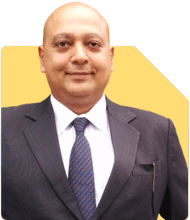56-Year-Old Seeking Financial Advice for Monthly Income of 1.5 Lakh After 58
Ramalingam Kalirajan |8290 Answers |Ask -Follow
Mutual Funds, Financial Planning Expert - Answered on Aug 21, 2024
He has an MBA in finance from the University of Madras and is a certified financial planner.
He is the director and chief financial planner at Holistic Investment, a Chennai-based firm that offers financial planning and wealth management advice.... more

I am 56 years old, still in service , monthly income is @80k. Savings are FD 90L, PF 35 L , PPF 40L, MF 50L , financial planning help needed for monthly income on 1.5L after 58years.
Current Financial Overview
You’ve built a solid financial foundation with savings spread across various instruments:
Fixed Deposits (FD): Rs 90 lakh
Provident Fund (PF): Rs 35 lakh
Public Provident Fund (PPF): Rs 40 lakh
Mutual Funds (MF): Rs 50 lakh
These assets total Rs 2.15 crore, a significant amount. However, to achieve a monthly income of Rs 1.5 lakh post-retirement, careful planning and investment strategies are essential.
Evaluating Your Existing Investments
1. Fixed Deposits (FD)
Pros: Safe and secure with guaranteed returns.
Cons: Interest rates on FDs have been declining, and returns may not beat inflation. This could affect your purchasing power over time.
Suggestion: As you approach retirement, you may consider partially or fully liquidating your FDs and reinvesting in higher-yielding, yet relatively safe, instruments.
2. Provident Fund (PF)
Pros: Stable and secure with government backing, offering guaranteed returns.
Cons: Returns, while safe, are typically lower and may not keep pace with inflation.
Suggestion: Continue with your PF until retirement, as it’s a reliable source of income. Post-retirement, you can withdraw and reinvest this amount to generate regular income.
3. Public Provident Fund (PPF)
Pros: Tax-free returns with guaranteed interest.
Cons: Long lock-in period and relatively lower returns compared to other investments.
Suggestion: Let the PPF continue until maturity. The maturity amount can be used for lump-sum withdrawals or reinvested to generate regular income.
4. Mutual Funds (MF)
Pros: Offers higher returns with potential for capital appreciation.
Cons: Subject to market risks, which may cause fluctuations in returns.
Suggestion: Continue investing in mutual funds but consider shifting to more conservative or balanced funds as you approach retirement to reduce risk.
Creating a Retirement Income Strategy
1. Shifting Focus to Regular Income
Your goal is to generate a regular monthly income of Rs 1.5 lakh. A systematic withdrawal plan (SWP) from your mutual funds can help achieve this.
SWPs allow you to withdraw a fixed amount every month, providing regular income while keeping the rest of the investment growing. This can be especially useful in the early years of retirement.
Alternatively, annuities might seem appealing due to guaranteed payouts, but they often provide lower returns and lack flexibility. Hence, avoid them.
2. Balanced Portfolio for Stability
A mix of debt and equity funds can help balance risk and returns. Debt funds provide stability and regular income, while equity funds offer growth potential.
Consider allocating a portion of your portfolio to balanced or hybrid funds, which invest in a mix of equity and debt. This can offer moderate returns with lower volatility, suitable for retirement.
3. Utilising Fixed Deposits and PF
Part of your FD can be reinvested in monthly income plans or short-term debt funds, which typically offer better returns than traditional FDs with similar safety.
Your PF, once withdrawn, can be split into liquid funds for emergency needs and debt funds for generating regular income. This strategy ensures that your capital is preserved while still earning a reasonable return.
4. Using PPF Wisely
PPF maturity proceeds can be used in two ways: either reinvest in safe instruments like senior citizen savings schemes or use it as a buffer for your retirement corpus.
Since PPF offers tax-free returns, you might consider using it for lump-sum needs or reinvest in conservative mutual funds for tax-efficient income.
Planning for Tax Efficiency
1. Minimising Tax Liability
Post-retirement, tax planning becomes crucial. Income from fixed deposits, PF, and some debt funds may be fully taxable, impacting your net income.
Consider investing in tax-efficient funds like equity mutual funds, which have favorable tax treatment for long-term capital gains.
Also, strategically plan withdrawals from your PPF and other tax-free investments to ensure minimal tax burden.
2. Making Use of Senior Citizen Benefits
Upon retirement, you’ll be eligible for various tax benefits available to senior citizens. This includes higher exemption limits and additional deductions under Section 80C, 80D, etc.
Leveraging these benefits can help you maintain a higher post-tax income, contributing towards your goal of Rs 1.5 lakh per month.
Creating a Contingency Plan
1. Emergency Funds
Even in retirement, maintaining an emergency fund is essential. Aim to keep at least 6-12 months’ worth of expenses in a liquid fund or savings account for unforeseen expenses.
This ensures that your regular income strategy isn’t disrupted by unexpected events.
2. Healthcare and Insurance
Health expenses can be a significant concern during retirement. Ensure you have adequate health insurance coverage that caters to your needs as you age.
Additionally, consider a critical illness cover, which can provide a lump sum in case of serious health issues.
Adjusting Your Plan as Needed
1. Review and Rebalance
Your financial plan should be dynamic. Regularly review your investments and adjust based on market conditions and your income needs.
Rebalancing your portfolio, especially as you age, can help ensure that your investments continue to meet your retirement goals.
2. Consider Professional Guidance
Managing a retirement corpus to generate Rs 1.5 lakh monthly income requires careful planning and expertise.
Consulting a Certified Financial Planner (CFP) can provide you with tailored advice and strategies that align with your specific needs and goals.
Finally
Your current savings provide a strong foundation, but achieving a monthly income of Rs 1.5 lakh post-retirement requires a balanced approach. By strategically investing in a mix of mutual funds, debt instruments, and using systematic withdrawals, you can create a steady income stream. Tax efficiency, regular reviews, and professional guidance will be crucial in ensuring your financial security during retirement.
Best Regards,
K. Ramalingam, MBA, CFP,
Chief Financial Planner,
www.holisticinvestment.in
You may like to see similar questions and answers below
Ramalingam Kalirajan |8290 Answers |Ask -Follow
Mutual Funds, Financial Planning Expert - Answered on Jul 17, 2024
Ramalingam Kalirajan |8290 Answers |Ask -Follow
Mutual Funds, Financial Planning Expert - Answered on Jul 25, 2024
Ramalingam Kalirajan |8290 Answers |Ask -Follow
Mutual Funds, Financial Planning Expert - Answered on Jul 17, 2024
Ramalingam Kalirajan |8290 Answers |Ask -Follow
Mutual Funds, Financial Planning Expert - Answered on Jul 22, 2024
Dr Dipankar Dutta |1165 Answers |Ask -Follow
Tech Careers and Skill Development Expert - Answered on Apr 24, 2025
Dr Dipankar Dutta |1165 Answers |Ask -Follow
Tech Careers and Skill Development Expert - Answered on Apr 24, 2025
Dr Dipankar Dutta |1165 Answers |Ask -Follow
Tech Careers and Skill Development Expert - Answered on Apr 24, 2025
Dr Dipankar Dutta |1165 Answers |Ask -Follow
Tech Careers and Skill Development Expert - Answered on Apr 24, 2025
Vipul Bhavsar |58 Answers |Ask -Follow
Tax Expert - Answered on Apr 24, 2025
Radheshyam Zanwar |1564 Answers |Ask -Follow
MHT-CET, IIT-JEE, NEET-UG Expert - Answered on Apr 24, 2025
Radheshyam Zanwar |1564 Answers |Ask -Follow
MHT-CET, IIT-JEE, NEET-UG Expert - Answered on Apr 24, 2025
Sushil Sukhwani |594 Answers |Ask -Follow
Study Abroad Expert - Answered on Apr 24, 2025
Sushil Sukhwani |594 Answers |Ask -Follow
Study Abroad Expert - Answered on Apr 24, 2025
Sushil Sukhwani |594 Answers |Ask -Follow
Study Abroad Expert - Answered on Apr 24, 2025



















